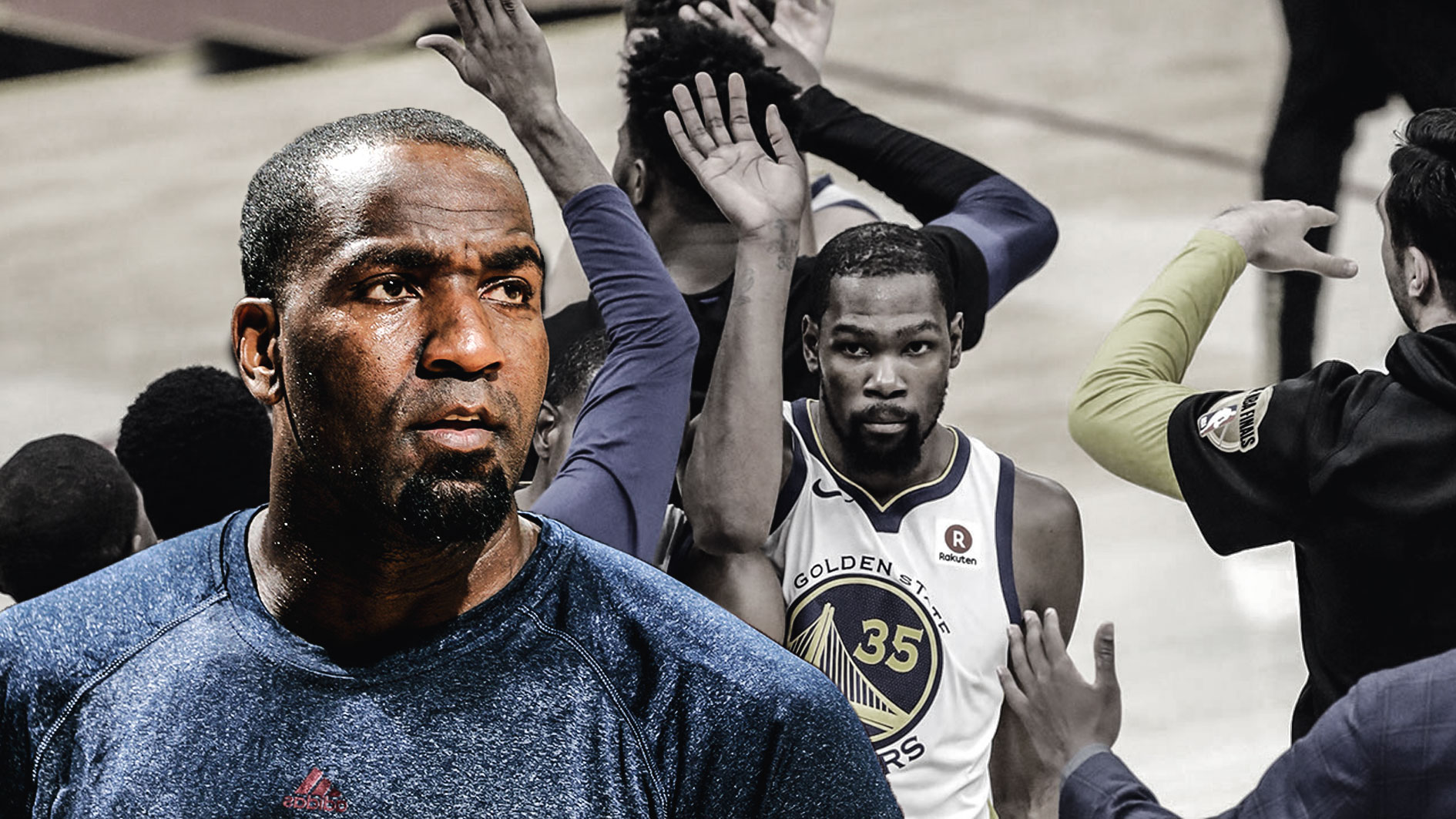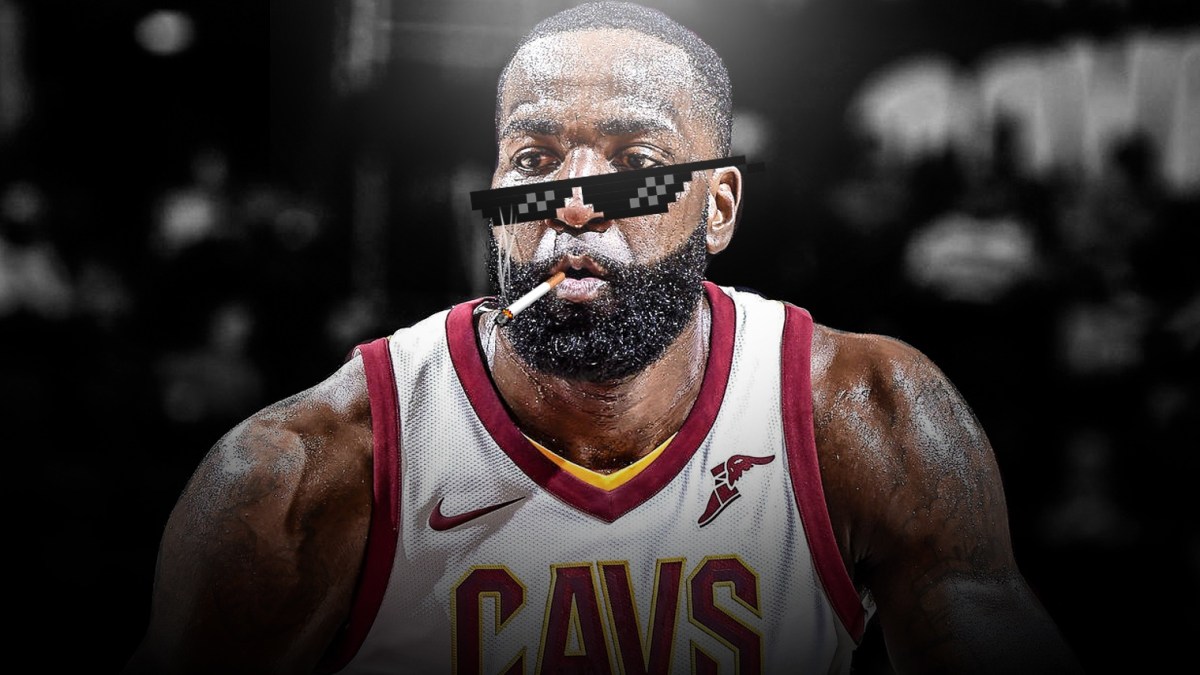Veteran leadership is one thing that the Cleveland Cavaliers have not lacked over the past four seasons. Players such as LeBron James, Mike Miller, Richard Jefferson, and Channing Frye have been steady hands in the many trying times during the Cavs’ NBA Finals runs. Despite receiving hardly any playing time during his two separate stints with the Cavaliers, Kendrick Perkins has been one of Cleveland’s most important locker room presences.
Perkins was drafted 27th overall in 2003 by the Memphis Grizzlies, and he was immediately traded to the Boston Celtics. After being a reserve for his first two seasons, Perkins averaged 19.6 minutes per game in 2005-2006, scoring 5.2 points, pulling down 5.6 rebounds, and blocking 1.5 shots.
It was during that year that Perkins began to build his reputation as a defensive enforcer, a role that he played invaluably during the Celtics’ 2007-2008 championship season.

Perkins’ best year came in 2009-2010, when he averaged 10.1 points, 7.6 rebounds, and 1.7 blocks in 27.6 minutes per game. In Game 6 of the 2010 NBA Finals against the Los Angeles Lakers, Perkins tore his MCL and PCL, and that injury limited him to just 29 games the next season.
Those 29 games were split between the Celtics and the Oklahoma City Thunder, as Boston sent Perkins and Nate Robinson to OKC for Jeff Green. In 2012, Perkins made his third NBA Finals appearance, but the Thunder fell to the Miami Heat.
Three years later, Oklahoma City traded Perkins to the Utah Jazz, who waived him two days after the deal was finalized. Now a free agent, Perkins began to search for his new team at the age of 30.
https://www.youtube.com/watch?v=ewU0KYtgsuk
In need of more veterans with NBA Finals experience, the Cleveland Cavaliers signed Perkins for the remainder of the season, and he appeared in 17 games for Cleveland. Things were going well for the Cavs, at least until Kevin Love had his shoulder ripped out of its socket in the Eastern Conference playoffs. Still, behind LeBron James and Kyrie Irving, it looked like the Cavaliers had a great shot at winning their first-ever NBA championship.
But then, at the end of overtime in Game 1 against the Golden State Warriors, Kyrie Irving shattered his kneecap, and the Cavs fell to the Warriors in six games. Perkins did not see the floor during the Finals, but his leadership helped Cleveland to win those two games, despite being without two of their three best players.
After his third Finals loss, Perkins joined the New Orleans Pelicans for the 2015-2016 season. Despite struggling through some injuries, Perkins played some meaningful minutes in his 37 games with New Orleans, averaging 2.5 points and 3.5 rebounds in 14.6 minutes per game.
Perkins did not play in 2016-2017, but prior to the 2017-2018 season, he returned to the Cavaliers. He played in three preseason games before being waived. He then joined the Canton Charge, Cleveland’s G-League affiliate, and played for them until February of 2018, when he announced his retirement.
However, in April, he signed with the Cavs for a third time, and resumed his locker room duties. Perkins played in just one game on the season (and did not step onto the court during the playoffs), but he wasn’t signed to play a major role on the court. His job was to give the locker room an edge, and he succeeded in that mission by antagonizing Drake during the second round against the Toronto Raptors, and drawing the ire of Stephen Curry in Game Two of the Finals simply by not moving while sitting on the bench.
Because Perkins wasn’t an on-court contributor last season, it is puzzling as to why the Cavaliers decided to exercise his $2.5 million option for next year. This was most likely done in preparation of a future trade, whether that involves bringing in young players and draft picks for Kevin Love and Kyle Korver, or taking on a bad contract in exchange for picks.
In the meantime, Perkins will serve as a mentor to Cleveland’s younger players. Ante Zizic in particular could learn much from Perkins, as Zizic is not as physical at this point as he ideally should be. Perkins is the perfect player to teach him.
Perkins is one of only eight players remaining from the 2003 draft class. The others are LeBron James, Carmelo Anthony, David West, Zaza Pachulia, Jose Calderon, Udonis Haslem, and Kyle Korver. He will turn 34 in November, and his career looks like it is coming to an end. His previous injuries have taken some of his athleticism, and he wasn’t known as a ridiculously athletic player before. He is a throwback physical big man, and that kind of player has been marginalized in today’s NBA. Perkins just doesn’t have a spot in the league anymore, and while that is sad, he will at least retire as an NBA champion.
It would not be surprising to see the Cavs bring Perkins back as a coach after his playing days are over, similar to what they did with Damon Jones. His is beloved by his teammates, both current and former, and will leave a lasting impact on the Cavaliers, even if it wasn’t on the floor.
